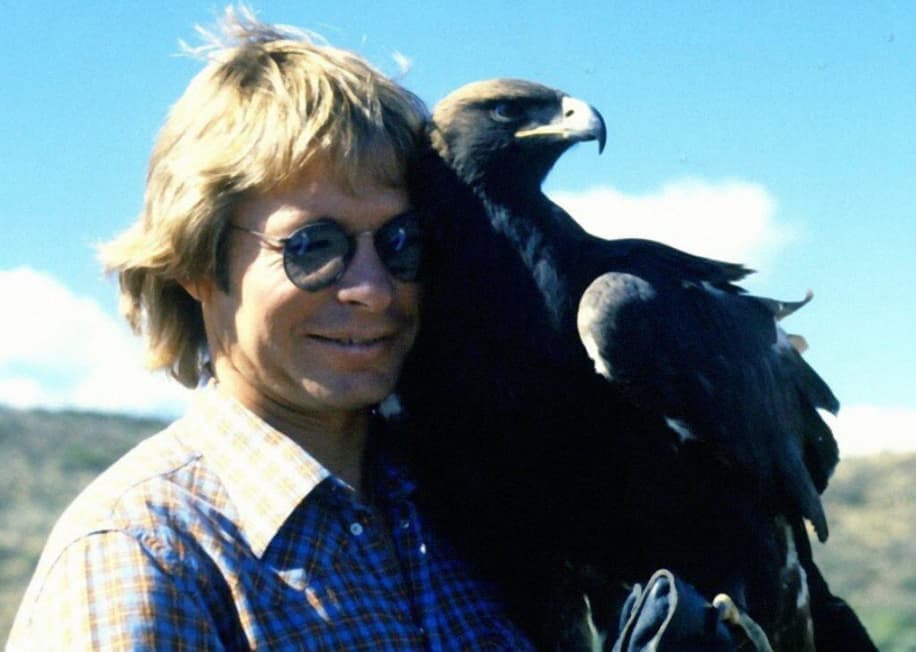
John Denver’s “The Eagle and the Hawk”: A Song of Nature, Freedom, and Hope
In the realm of folk music, few names resonate with the same enduring charm and heartfelt sincerity as John Denver. His songs, imbued with a profound appreciation for the natural world and the human spirit, have captivated audiences for generations. Among his vast repertoire of beloved tunes, “The Eagle and the Hawk” stands out as a poignant ballad that encapsulates Denver’s signature blend of environmental consciousness, personal reflection, and unwavering optimism.
Released in 1971 as part of Denver’s album Aerie, “The Eagle and the Hawk” immediately captured the hearts of listeners with its evocative imagery and soaring melodies. The song paints a vivid picture of two majestic birds, the eagle and the hawk, soaring through the vast expanse of the sky, each representing distinct aspects of the natural world and the human experience.
The Eagle, a symbol of strength, majesty, and unwavering freedom, takes center stage in the first verse. Denver’s lyrics transport listeners to the eagle’s lofty domain, high among the Rocky Mountains, where it reigns supreme, unburdened by the constraints of earthly existence. The eagle’s presence evokes a sense of awe and wonder, reminding us of the boundless possibilities that lie within our own reach.
In contrast, the hawk, a creature of prey, is introduced in the second verse, its presence marked by a hint of predatory intensity. Yet, Denver’s lyrics subtly convey a sense of respect for the hawk’s role in the delicate balance of the ecosystem. The hawk’s existence, though seemingly at odds with the eagle’s peaceful reign, serves as a reminder of the interconnectedness of all living things.
As the song progresses, the eagle and the hawk transcend their individual representations, becoming metaphors for the duality that exists within both the natural world and the human spirit. The eagle embodies our aspirations for freedom, peace, and connection with the divine, while the hawk represents our primal instincts, our capacity for conflict, and our connection to the earth.
Denver masterfully weaves together the imagery of the eagle and the hawk with themes of personal transformation and societal progress. He encourages listeners to embrace the eagle’s spirit, to soar above the limitations of fear and doubt, and to strive for a higher plane of existence. Yet, he also acknowledges the hawk within us, the part that grapples with challenges and seeks to survive in a world of uncertainty.
The song’s chorus serves as a powerful call to action, urging listeners to “dance with the west wind and touch on the mountain tops”. It is an invitation to embrace the beauty and vastness of the natural world, to shed the burdens of our daily lives, and to connect with the boundless potential that lies within each of us.
“The Eagle and the Hawk” concludes with a message of hope and optimism. Denver reminds us that “time is still turning” and that the challenges we face, like the blood on the hawk’s feathers, will eventually fade. He encourages us to look towards the future with anticipation, to believe in our ability to create a better world, and to never lose sight of the eagle’s spirit that resides within us all.
John Denver’s “The Eagle and the Hawk” is more than just a song; it is a timeless anthem that celebrates the beauty of nature, the power of the human spirit, and the enduring hope for a brighter future. Its message of unity, resilience, and the interconnectedness of all living things resonates as deeply today as it did when Denver first penned its lyrics over five decades ago. As we continue to navigate the complexities of the 21st century, “The Eagle and the Hawk” serves as a beacon of inspiration, reminding us of the transformative power of music to connect us to our shared humanity and to the boundless possibilities that lie within our grasp.